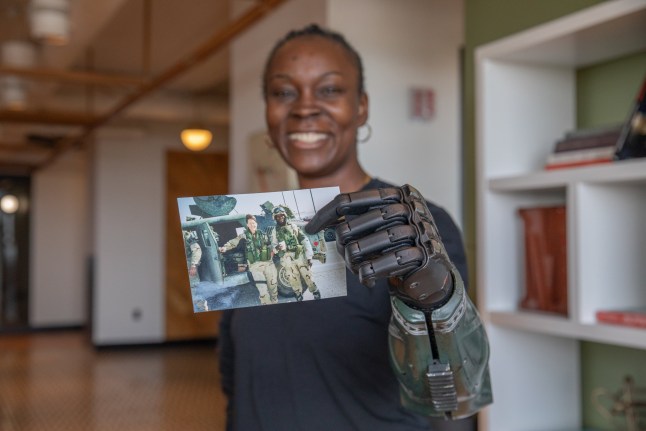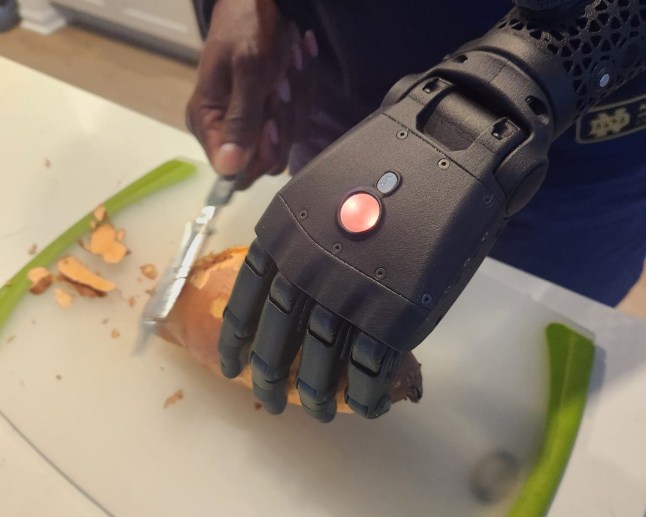Around 50,000 veterans in the US have suffered a major limb loss – of them,30,000 had lost an upper limb,according to official figures in 2022.
Danielle said: ‘I love my bionic arm. It gives me balance,it makes me feel whole,makes me feel complete.
‘As a female combat veteran wearing this arm in public,I know it’s about more than just me.
‘Little girls who’ve lost a limb see someone like them moving forward with confidence. Their parents see it too,and it creates a ripple effect of awareness and possibility.
‘In the military,we never leave anyone behind,and that’s how I see this project.
‘This is my way of helping hundreds of thousands of veterans who are looking for employment or a new purpose in life.’

Danielle had to learn how to do many basic tasks,like writing,with her right hand (Picture: Open Bionics / SWNS)
The technology behind prosthetic limbs has been turbocharged in recent years by the rise of 3-D printing and artificial intelligence (AI).
Being fitted with a prosthetic typically involves taking a cast of a person’s limb before attaching electrodes around the area of the lost body part.
Technicians ask the person to think about doing a task,like twisting a doorknob,which provides data used to teach the prosthetic how to move.
But prosthetic technology is in no way perfect,Samantha Payne MBE,the co-founder of Open Bionics,told Metro. Many amputees have to carry multiple arms to carry out tasks,like working or exercising.

Bionic prosthetics rely on special sensors and data on a person’s brain to work (Picture: Open Bionics / SWNS)
‘Now,you just need one wireless arm and you can use any attachment you like,a bionic hand,or sports attachment,’ she said. ‘No more lugging around multiple arms.’
She added: ‘This has been years of hard work. The design pushes the very boundaries of what is physically possible.’
Researchers have found that amputees who opt not to use a prosthetic arm do so for comfort or fears that one splash of water could fry the kit.
Payne said: ‘The Hero RGD holds all components in the palm of the hand,making it the first design ever built to house a battery enabling wireless control.
‘Importantly,it enables amputees to be able to get it wet without worrying about frying electronics – something that has plagued amputees with bionic hands for a very long time.’
United News - unews.co.za